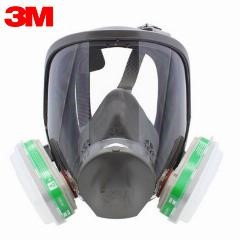Respirator Fit Testing
 OSHA (Title 29 CFR 1910.134 and Title 8 CCR §5144) requires employers to develop a Respiratory Protection Program and provide respirators to employees “when such equipment is necessary to protect the health of such employee”. Ammonia refrigeration operators and technicians must utilize respirators for a variety of their job functions including, but not limited to:
OSHA (Title 29 CFR 1910.134 and Title 8 CCR §5144) requires employers to develop a Respiratory Protection Program and provide respirators to employees “when such equipment is necessary to protect the health of such employee”. Ammonia refrigeration operators and technicians must utilize respirators for a variety of their job functions including, but not limited to:
- Oil draining
- Purging non-condensable gasses
- Pump downs
- Transfer operations
One of the requirements of OSHA’s Respiratory Protection Program is to conduct a respirator fit test on employees before they begin use of a respirator. The fit test must be conducted “with the same make, model, style, and size of respirator that will be used” by the employee. OSHA defines two types of fit tests that can be used:
- Qualitative fit test (QLFT) means a pass/fail fit test to assess the adequacy of respirator fit that relies on the individual’s response to the test agent.
- Quantitative fit test (QNFT) means an assessment of the adequacy of respirator fit by numerically measuring the amount of leakage into the respirator.
Title 29 CFR 1910.134(f)(6) and Title 8 CCR §5144(f)(6) restrict the use of QLFT to negative pressure air-purifying respirators with a fit factor of 100 or less. The fit factor is defined in subsection (b) as:
- Fit factor means a quantitative estimate of the fit of a particular respirator to a specific individual, and typically estimates the ratio of the concentration of a substance in ambient air to its concentration inside the respirator when worn.
The fit factor for a given respirator will vary based on the type of respirator used. According to 3M’s document titled Respirator Fit Testing, the fit factor “is generally 10 times the assigned protection factor for the negative pressure respirator tested”. OSHA defines assigned protection factor as:
- Assigned protection factor (APF) means the workplace level of respiratory protection that a respirator or class of respirators is expected to provide to employees when the employer implements a continuing, effective respiratory protection program as specified by this section.
Assigned protection factors for various types of respirators are included in Table 1 of OSHA’s regulation:

Due to the potential for eye injury caused by ammonia, IIAR recommends use of a full-face respirator for activities requiring respirator use. Since a full-face respirator has an assigned protection factor of 50 (see Table 1), the fit factor can be estimated as 500 (10x the APF).
In conclusion, it is unacceptable to use a qualitative fit test (QLFT) for entry into a Respiratory Protection Program where anhydrous ammonia is the chemical of concern. Use this information as an opportunity to review and update your Respiratory Protection Program if necessary.

Leave a Reply